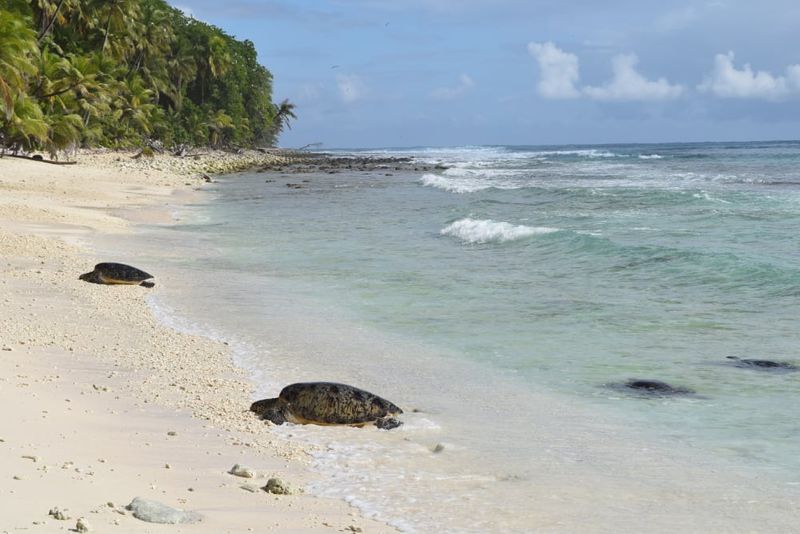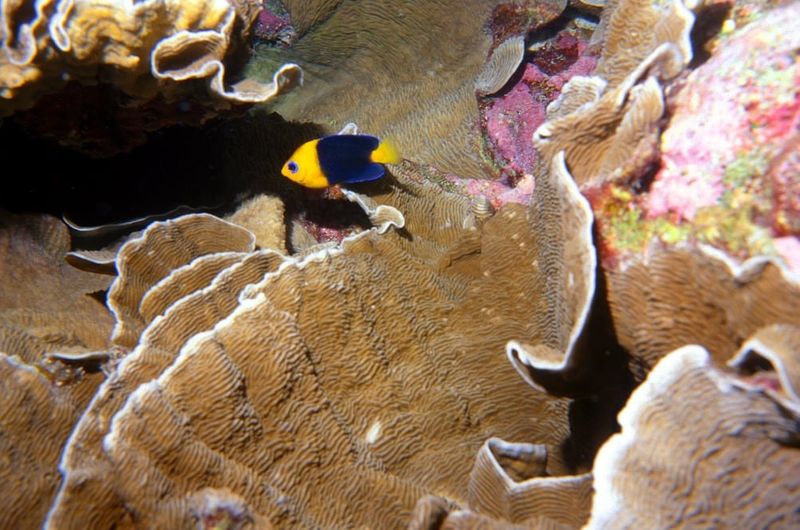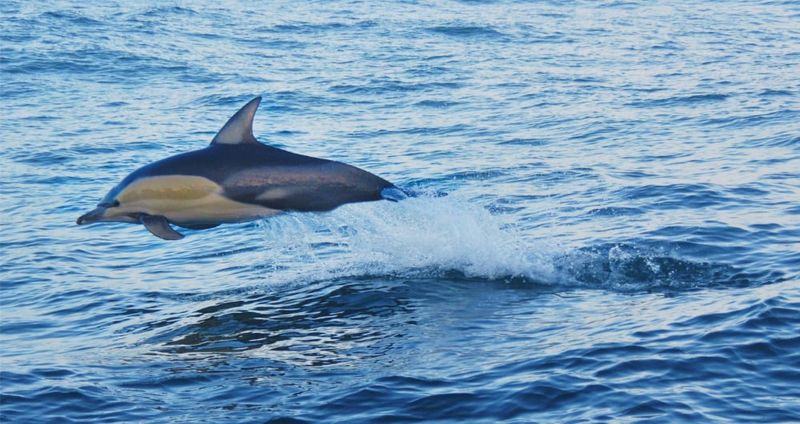Marine life
The marine environments of Pulu Keeling National Park play host to a wide variety of mammals, reptiles and fish.
North Keeling Island is almost entirely surrounded by a coral reef, which is in pristine condition thanks to its isolated location and lack of human impact.
The deeper waters around the island are likely home to unique ecological systems we know almost nothing about.
Sea turtles

Large numbers of threatened green turtles (Chelonia mydas) nest on the beaches of North Keeling Island.
Hawksbill turtles (Eretmochelys imbricata) are often seen in the park’s waters, but are not known to breed on the island.
Other turtles that visit the Cocos (Keeling) Islands include olive ridley turtles (Lepidochelys olivacea), loggerheads (Caretta caretta) and leatherbacks (Dermochelys coriacea).
Fish

201 species of fish have been recorded in the park, and there are many more yet to be surveyed. One colourful fish – the Cocos angelfish (Centropyge joculator) – is only found in the Cocos (Keeling) Islands and Christmas Island.
The Cocos (Keeling) Islands lie within the distribution zones of both Indian and Pacific Ocean fish species. This has produced large number of hybrid fish, and could eventually lead to the evolution of new species.
Several shark species can be seen in and around the Cocos (Keeling) Islands, including migrating whale sharks (Rhinocodon typus).
Marine mammals

Two species of dolphin are regularly seen in the park: the common dolphin (Delphinus delphis) and the bottlenose dolphin (Tursiops truncatus).
Humpback whales (Megaptera novaeangliae) also migrate past the island at times.

